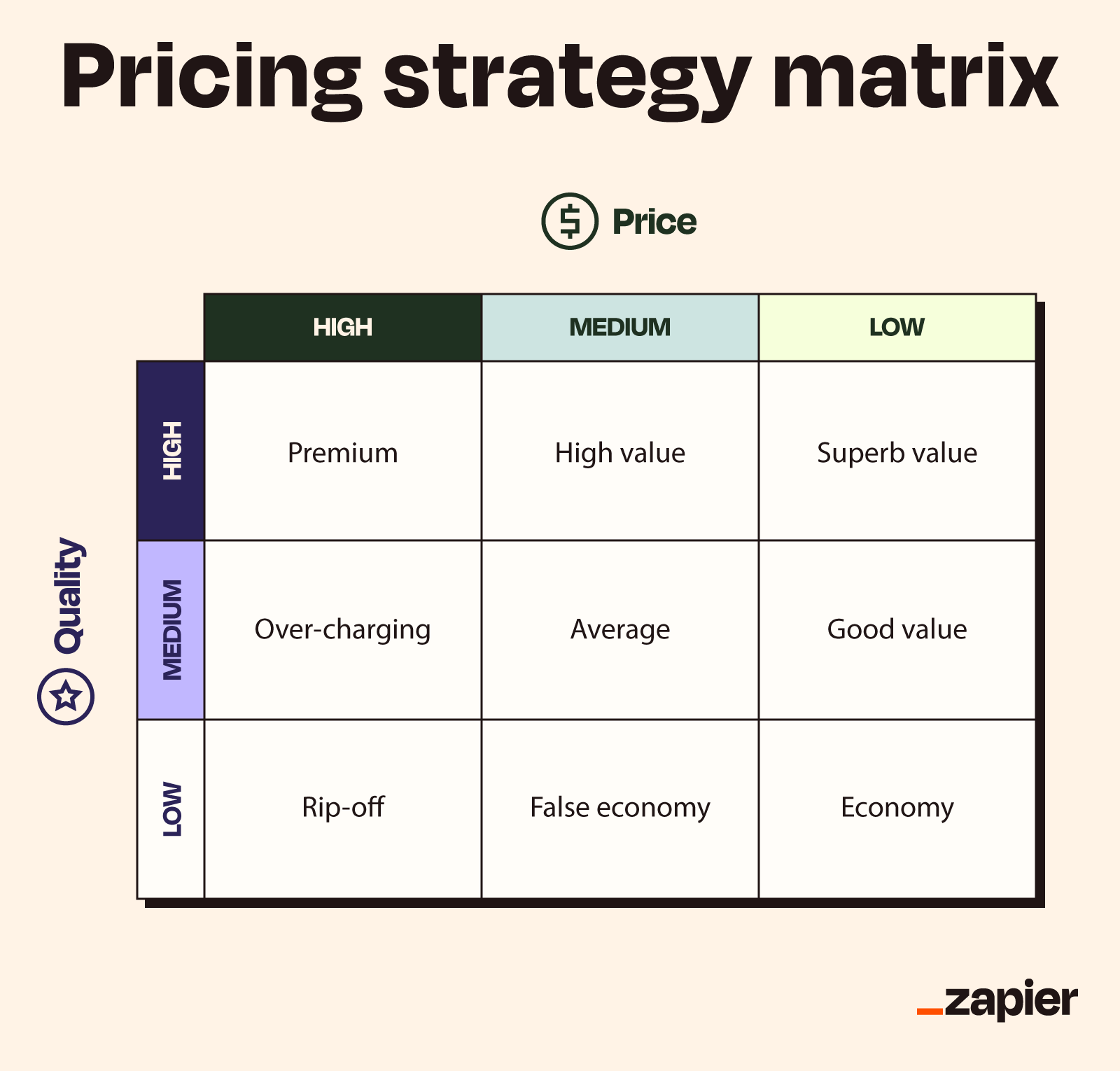Optimize Revenue With Proven Prices Strategy Techniques
Techniques such as value-based pricing, vibrant pricing, and extensive market analysis can considerably enhance a company's financial efficiency. Recognizing customer understanding and leveraging information analytics for nimble pricing adjustments are essential components of this technique.
Understanding Customer Understanding
Recognizing customer perception is important for developing reliable rates strategies. It affects just how consumers assess a product's value, quality, and general beauty. Companies must identify that clients usually base their determination to pay not solely on the product's inherent characteristics yet additionally on psychological factors, including brand name credibility, social condition, and perceived deficiency.

Furthermore, companies need to take into consideration the role of pricing psychology, such as appeal rates or price anchoring, which can significantly impact client actions. Recognizing these assumptions makes it possible for organizations to frame their rates strategies in a manner that straightens with customer assumptions while maximizing success.
Incorporating customer perception into pricing techniques not only help in establishing competitive prices but additionally cultivates brand commitment, as consumers really feel recognized and valued. Inevitably, a nuanced understanding of customer assumption can bring about sustainable revenue growth and boosted market positioning.
Analyzing Market Trends
To create an effective rates technique, examining market fads is important for companies aiming to remain competitive. Understanding the dynamics of market variations makes it possible for companies to make enlightened choices concerning prices modifications, product launches, and resource allotment - Pricing Strategy. By keeping an eye on consumer behavior, financial signs, and industry advancements, companies can identify patterns that notify their pricing frameworks
Seasonal patterns can offer understandings into ideal pricing throughout top and off-peak periods, allowing for critical discounting or marketing pricing. Furthermore, keeping an eye on technical improvements can aid recognize potential threats or chances that might impact rates approaches.
Making use of information analytics devices can boost the accuracy of pattern analysis, giving important insights that facilitate nimble decision-making. Firms need to additionally think about performing regular marketing research to verify presumptions and adapt to developing customer preferences. By leveraging these understandings, companies can not only maximize their pricing approaches but additionally strengthen their overall market setting, making sure long-term success and development.
Competitive Rates Approaches
An affordable pricing technique is vital for services aiming to gain a side in a crowded marketplace. By examining competitors' rates structures and market positioning, business can purposefully set their rates to attract customers while preserving productivity. This method requires a complete understanding of both the affordable landscape and client perceptions of value.
One effective approach is cost matching, where a business provides to beat a competitor or match's rate. This strategy can improve customer loyalty and encourage sales, especially in price-sensitive markets. In addition, infiltration rates can be employed to capture market share by at first establishing rates less than rivals, tempting consumers to attempt the article source product and fostering brand awareness.
Furthermore, companies can apply psychological prices approaches, such as rates things just listed below a rounded number (e.g., $9.99 rather than $10 - Pricing Strategy.00) This can create the perception of a far better deal, influencing consumer habits
Eventually, an effective affordable prices strategy stabilizes the demand to stay appealing to clients while guaranteeing that the rates design lines up with the firm's general goals. Frequently changing and examining prices in reaction to market shifts and click this site rival actions is necessary for sustained success.
Value-Based Pricing Techniques
Value-based rates techniques focus on establishing rates largely based on the perceived value of a services or product to the consumer, instead of only on production costs or rival prices. This approach needs a deep understanding of customer requirements, preferences, and the unique advantages that the product and services offers. By determining the specific worth motorists that resonate with customers, organizations can produce rates approaches that reflect the true worth of their offerings.
To carry out value-based pricing efficiently, companies have to participate in thorough marketing research, consisting of consumer surveys and emphasis groups, to collect understandings into customer assumptions. In addition, companies need to segment their customer base to tailor prices strategies that line up with various value understandings throughout segments.
Communication plays a critical role in value-based pricing; business should verbalize the one-of-a-kind worth suggestion clearly to validate the cost point. Additionally, continuous examination and modification are necessary, as consumer perceptions of worth might move with time because of market dynamics or affordable actions. By prioritizing value Source in prices approaches, companies can improve customer complete satisfaction, improve loyalty, and eventually optimize income.
Dynamic Pricing Models

Dynamic pricing leverages advanced formulas and information analytics to monitor rival rates, customer actions, and supply levels. By dynamically readjusting rates, services can maximize profits, maximize profit margins, and respond promptly to adjustments in the industry. For example, airlines often employ this design to adjust ticket prices based on aspects like remaining seats, time up until departure, and rival prices.
Nonetheless, the execution of dynamic prices have to be come close to with caution. Clear communication with clients is necessary to preserve trust and stay clear of understandings of unjust rates practices. In addition, services ought to make sure that their rates algorithms are not extremely complex or nontransparent, as this can bring about customer dissatisfaction.
Eventually, when implemented attentively, dynamic pricing versions can supply companies with a significant affordable advantage, permitting them to take advantage of market opportunities while accommodating client assumptions in a swiftly transforming financial landscape.
Verdict

Methods such as value-based prices, vibrant pricing, and complete market analysis can significantly boost a company's economic efficiency. Seasonal trends can offer insights right into optimum pricing throughout optimal and off-peak durations, permitting for critical discounting or promotional prices.Dynamic rates leverages innovative formulas and data analytics to keep track of rival prices, consumer behavior, and stock levels. By recognizing customer understanding, examining market fads, and applying competitive rates methods, businesses can efficiently straighten their prices with customer expectations. In addition, value-based pricing and vibrant rates models allow organizations to respond agilely to market changes.